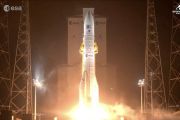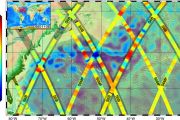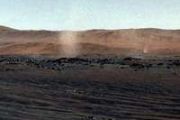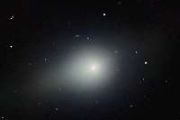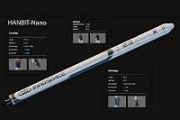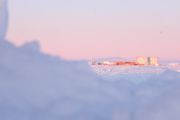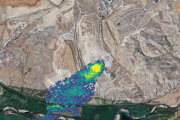
Copernical Team
Most massive stars in the early universe were likely born as binaries
 A new study from Tel Aviv University's School of Physics and Astronomy suggests that most massive stars formed in the early universe were born in pairs, echoing patterns seen among massive stars in our own Milky Way. The finding provides the first strong evidence that binary star formation was common in the early cosmos-an insight that reshapes understanding of how black holes, supernovae, and h
A new study from Tel Aviv University's School of Physics and Astronomy suggests that most massive stars formed in the early universe were born in pairs, echoing patterns seen among massive stars in our own Milky Way. The finding provides the first strong evidence that binary star formation was common in the early cosmos-an insight that reshapes understanding of how black holes, supernovae, and h Dark matter returns as leading explanation for galactic gamma ray glow
 A new study has reignited the long-running debate over what causes the mysterious gamma-ray glow emanating from the Milky Way's center, suggesting that dark matter may once again be the most plausible explanation.
Led by Dr. Moorits Muru, with Dr. Noam Libeskind and Dr. Stefan Gottlober from the Leibniz Institute for Astrophysics Potsdam (AIP), in collaboration with Professor Yehuda Hoffma
A new study has reignited the long-running debate over what causes the mysterious gamma-ray glow emanating from the Milky Way's center, suggesting that dark matter may once again be the most plausible explanation.
Led by Dr. Moorits Muru, with Dr. Noam Libeskind and Dr. Stefan Gottlober from the Leibniz Institute for Astrophysics Potsdam (AIP), in collaboration with Professor Yehuda Hoffma China commissions world's first mid-infrared solar magnetic-field telescope
 The National Astronomical Observatories of the Chinese Academy of Sciences (NAOC) has announced that the world's first telescope dedicated to measuring solar magnetic fields in the mid-infrared band has passed its final acceptance review and is now fully operational.
Known as the Accurate Infrared Magnetic Field Measurements of the Sun (AIMS), the telescope marks a breakthrough in global s
The National Astronomical Observatories of the Chinese Academy of Sciences (NAOC) has announced that the world's first telescope dedicated to measuring solar magnetic fields in the mid-infrared band has passed its final acceptance review and is now fully operational.
Known as the Accurate Infrared Magnetic Field Measurements of the Sun (AIMS), the telescope marks a breakthrough in global s Signals from the dawn of time may reveal secrets of the Big Bang
 For centuries, humans have sought to understand how the universe began. Now, researchers at the Max Planck Institute for Physics (MPP) and the Institut d'Astrophysique de Paris are proposing new ways to peer further back than ever before-toward the first instants following the Big Bang.
Physicists Leo Stodolsky of MPP and Joseph Silk of the Institut d'Astrophysique de Paris have developed
For centuries, humans have sought to understand how the universe began. Now, researchers at the Max Planck Institute for Physics (MPP) and the Institut d'Astrophysique de Paris are proposing new ways to peer further back than ever before-toward the first instants following the Big Bang.
Physicists Leo Stodolsky of MPP and Joseph Silk of the Institut d'Astrophysique de Paris have developed Asteroid with Second-Fastest Orbit Discovered Hidden in Sunlight
 A newly discovered asteroid has been found racing around the Sun in just 128 days, making it the Solar System's second-fastest known orbiting asteroid. Designated 2025 SC79, the object was detected by Carnegie Science astronomer Scott S. Sheppard on September 27, concealed within the Sun's glare-an area notoriously difficult to observe.
The asteroid's path takes it inside the orbit of Venu
A newly discovered asteroid has been found racing around the Sun in just 128 days, making it the Solar System's second-fastest known orbiting asteroid. Designated 2025 SC79, the object was detected by Carnegie Science astronomer Scott S. Sheppard on September 27, concealed within the Sun's glare-an area notoriously difficult to observe.
The asteroid's path takes it inside the orbit of Venu Sentinel-1D prepares for encapsulation ahead of November launch
 The European Space Agency has confirmed that the Sentinel-1D satellite is fuelled and ready for encapsulation, marking a key milestone in its launch campaign. The spacecraft is scheduled for liftoff on Tuesday, 4 November, aboard an Ariane 6 rocket from French Guiana.
Part of the Copernicus Earth observation programme, Sentinel-1D will continue the mission's delivery of high-resolution rad
The European Space Agency has confirmed that the Sentinel-1D satellite is fuelled and ready for encapsulation, marking a key milestone in its launch campaign. The spacecraft is scheduled for liftoff on Tuesday, 4 November, aboard an Ariane 6 rocket from French Guiana.
Part of the Copernicus Earth observation programme, Sentinel-1D will continue the mission's delivery of high-resolution rad US soliciting new bids for Moon mission amid SpaceX delays: NASA chief
This request seems a bit unusual, so we need to confirm that you're human. Please press and hold the button until it turns completely green. Thank you for your cooperation!
Press and hold the button
If you believe this is an error, please contact our support team.
185.132.36.159 : 186f1e54-86a3-4eed-9be4-7a822857
Remember the moon rover? Teams test a possible Artemis version
This request seems a bit unusual, so we need to confirm that you're human. Please press and hold the button until it turns completely green. Thank you for your cooperation!
Press and hold the button
If you believe this is an error, please contact our support team.
185.132.36.159 : e37ef25c-bf94-49a1-9b5a-e3030240
Starship could cut the travel time to Uranus in half
This request seems a bit unusual, so we need to confirm that you're human. Please press and hold the button until it turns completely green. Thank you for your cooperation!
Press and hold the button
If you believe this is an error, please contact our support team.
185.132.36.159 : 95ebed8a-2037-4187-b60e-a513bfcb
LUNA: Europe’s Moon on Earth
 Video:
00:02:21
Video:
00:02:21
ESA astronaut Matthias Maurer walks across the dusty terrain of LUNA, Europe's Moon on Earth. Nearby, ESA's Argonaut lander mock-up stands ready as he carefully navigates the simulated regolith - the dust, soil and rock on the Moon's surface. Alongside a fellow operator, he rehearses a moonwalk under the harsh glare of Sun simulators that mimic lunar lighting to test scientific tools designed to analyse lunar soil and rock.
ESA's robotic explorers, Interact and Spot, join the scene. Spot, the agile robot dog, picks up a sample while Interact, a wheeled robotic arm, supports this rehearsal of autonomous

